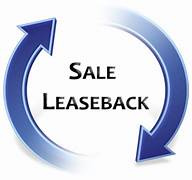You Are Looking For Canadian Business Financing!
Financing The Leaseback Transaction
You've arrived at the correct address! Welcome to 7 Park Avenue Financial
Financing & Cash flow are the most significant issues facing businesses today
Unaware / Dissatisfied with your financing options?
Call Now! - Direct Line - 416 319 5769 - Let's talk or arrange a meeting to discuss your needs.
Email - sprokop@7parkavenuefinancial.com
THE SALE LEASEBACK AGREEMENT FINANCING STRATEGY IN CANADA

What is a sale-leaseback?
Sale leaseback financing provides many advantages to Canadian business owners. While at the same time selling equipment or other assets ( for example, a property owner commercial real estate assets) to a third party, you effectively agree to use and repurchase the asset at an agreed-upon purchase price. At the end of the lease, ownership reverts to your firm via the lease agreement.
IT'S ALL ABOUT UNLOCKING CASH FLOW
The goal? Simply unlocking and cash flowing the equity you have in the asset. Naturally, every company has a different situation for evaluating the reasons to perform a sale and leaseback financing.
EQUITY IN YOUR OWNED ASSETS
Cash flowing the asset through this financing process allows your company in effect to extract equity - and almost always, that equity and potential cash flow infusion is significant, which is one of the reasons your firm is considering the financing via a buyer lessor.
Generally speaking, a typical loan to value amount under the financing process can unlock up to 100 % of the asset's value for a sale leaseback transaction. Naturally, in traditional finance scenarios, the typical loan to value would be 75%. Lease payments/rent payments are typically made for a 3-5 year term unless the transaction involves a real estate investment via a long term lease. Baloon payments may also potentially be restructured.
Capital leases are typically used in these financings of sale leaseback agreements instead of operating leases that specify a residual value.
IT'S IMPORTANT TO UNDERSTAND BALANCE SHEET IMPLICATIONS
Balance sheet implications also come about under the leasing back of assets, and the good news is that in most situations, those implications are positive. Your accountant will explain that issues such as depreciation can positively impact your financing statements in the sale-leaseback process. The asset's book value on your balance sheet might also have some implications, which should be reviewed with your accountant.
IMPROVING FINANCIAL RATIOS IN YOUR BALANCE SHEET
While ' off-balance-sheet financing ' is no longer in vogue for the seller lessee for a couple of reasons, the selling and refinancing of assets is a positive mechanism to cash flow success. Typically those all-important ratios and covenants that revolve around debt to equity positively impact company financial statements. Anytime you remove debt from the balance sheet tends to be a good thing, we are told!
IT'S ALL ABOUT LIQUIDITY
Business these days seems to move at lightning speed, and even the largest firms in Canada will consider the leasing back of assets to improve liquidity. Any finance mechanism that improves financial statements and generates cash simultaneously is a welcome Canadian business financing solution.
Let's backtrack to understanding clearly how the transaction works. The process is quite simple - your firm owns the asset, you sell it to the lessor/leasing company and lease it back. You have just converted a fixed asset to cash!
Crucial Tactics for Sale-Leaseback Financing

Typically it protects both the lender and you, the borrower, to ensure you have a proper appraisal of the asset in question - again, that's typically equipment or real estate. It is critical to mention that there can be no liens and encumbrances on the asset in question on your balance sheet.
While many firms employ sale-leasebacks as a cash flow strategy, they can also be used as a strategic option. Canadian banks sold many of their prestigious bank towers to realize the benefits of using that capital to grow the bank.
LEASEBACKS ELIMINATE THE ' CASH CRUNCH '
Unfortunately, it is safe to say that many firms find themselves in a cash crunch. That is also a key reason to entertain this method of asset refinancing - the sale leaseback transaction.

CONCLUSION - THE SALE LEASEBACK ARRANGEMENT
Typical asset categories in the equipment area involve construction, mfg, and rolling stock assets Companies in cash crunches use the cash to mend their working capital and debt situations. Many firms find themselves in seasonal cash crunches, which must be addressed. Remember one of the golden rules of finance: to use assets that appreciate while financing those that do not! Talk to your accountant about lease accounting in this type of funding strategy around tax benefits, etc.
Keep the leaseback finance strategy in mind as an additional tool kit in your business finance arsenal.
Speak to 7 Park Avenue Financial, a trusted credible, and experienced Canadian business financing advisor who can assist you with business refinancing solutions around sale-leasebacks when a conventional financing option may not be available.
FAQ: FREQUENTLY ASKED QUESTIONS
What is a sale-leaseback?
Equipment sale-leasebacks allow you to pledge an asset as collateral and borrow the funds through a lease or equipment finance agreement. In a typical sale-leaseback, depending on what is most suitable for meeting your needs, this type of transaction could result in either an operating lease (which involves paying monthly costs) or a capital lease.
Both financing options have their pros/cons. Traditional operating leases allow lessees to exercise a buyout at fair market value at lease term. The sale-leaseback enables companies to access additional capital & cash proceeds they need for various purposes, often including refinancing the business. The company retains the valuable asset for its use and has renewal options/ownership rights potentially available.
Click here for the business finance track record of 7 Park Avenue Financial